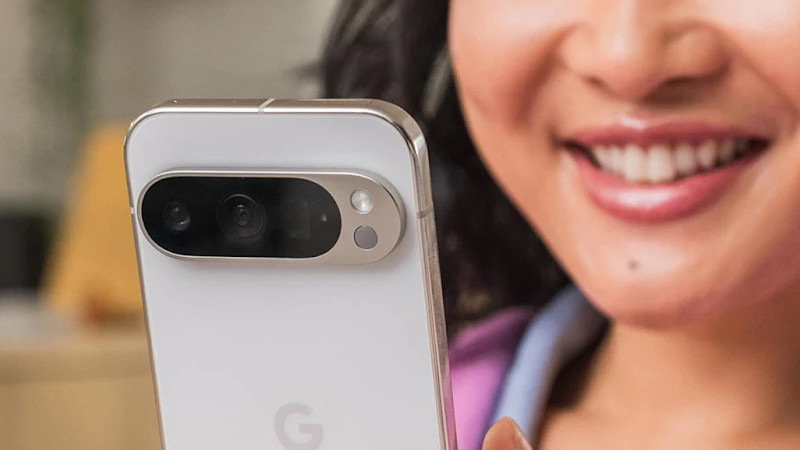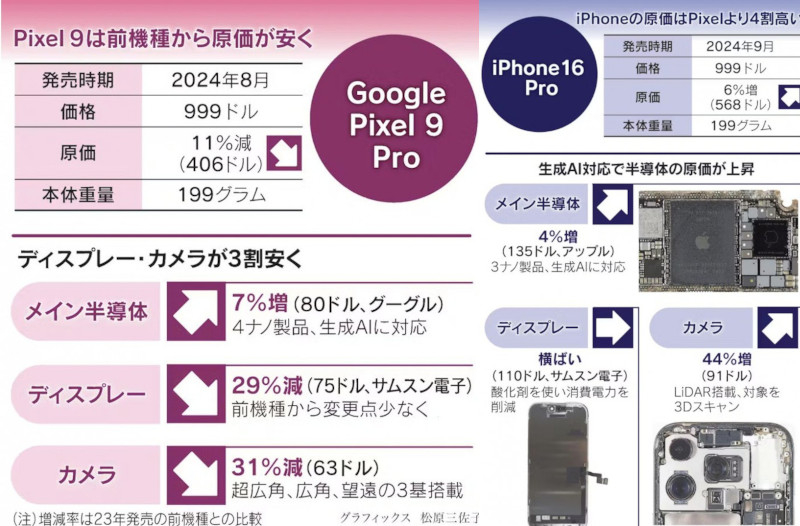In Japan, the estimated price of components (Bill Of Materials, BOM) for the Google Pixel 9 Pro and Apple iPhone 16 Pro smartphones has been calculated. According to these data, the cost of components for the Pixel 9 Pro is $406, while the iPhone 16 Pro is $568. However, both devices are sold at the same starting price of $999, highlighting the differences in the companies’ approaches to pricing and managing production costs.

Image source: Google
A BOM, or cost of parts estimate, is an estimate of the costs of the parts that make up a device and does not include research and development (R&D) and marketing costs, making it an estimate and not sufficient to fully estimate the cost of manufacturing a device. It is important to note that BOM information is not publicly available and may vary depending on calculation methods. However, even these indicative data make it possible to understand how Google and Apple differ in their approaches to setting the cost of their products.
According to the report, the cost of components for the Pixel 9 Pro is $406, and for the iPhone 16 Pro – $568. This difference suggests that the Pixel costs Google less to produce than the iPhone costs Apple to produce. The cost of components for the Pixel 9 Pro decreased by 11% compared to last year’s Pixel 8 Pro. However, keep in mind that the direct successor to the Google Pixel 8 Pro is the Pixel 9 Pro XL, not the Pixel 9 Pro. The latter’s smaller screen size and battery capacity were likely key factors in the lower component costs reported in the report.

Image source: gsmarena.com
The report also provides comparative cost data for individual components for both devices. For example, the iPhone 16 Pro chipset is priced at $135, the display at $110, and the cameras at $91. For the Pixel 9 Pro, the chipset costs $80, the display costs $75, and the cameras cost $61. The difference in component costs may be due to differences in the technologies used and the volume of purchases. This fact emphasizes that Apple is relying on more expensive and high-tech parts, which significantly affects the market price of the device.
Despite the difference in the cost of components, both models enter the market with the same starting price – $999. Apple traditionally focuses on high margins, investing in premium materials and advanced technologies, which supports its image in the luxury smartphone segment. Google probably pursues other goals – attracting new users and increasing market share due to a favorable price-quality ratio.